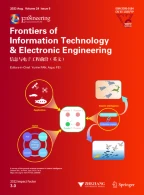Abstract
Constant current power transmission is considered a good choice for subsea observatories due to its high resistance to shunt faults. A constant current subsea observatory is planned to be constructed in the East China Sea. We discuss a constant current subsea observatory system used for scientific experiments. The power system and its heat dissipation system are carefully designed. The power conversion method is challenging due to the use of constant current power, which is considerably different from traditional power systems. Thus, we adopt power compensation circuits in the conversion system to obtain a constant 48-V output for science users. A power management system that performs overvoltage protection and real-time monitoring and control of junction box is discussed. An innovative heat dissipation structure of a junction box is designed in consideration of a sealed working environment to extend the useful life of the junction box. Simulations and experiments reveal that the system has high efficiency and stability, especially in long-term applications.
Similar content being viewed by others
References
Austin T, Edson J, McGillis W, et al., 2000. The Martha’s Vineyard Coastal Observatory: a long term facility for monitoring air-sea processes. Proc OCEANS MTS/IEEE Conf and Exhibition, p.1937-1941. https://doi.org/10.1109/OCEANS.2000.882223
Bahrami M, Yovanovich MM, Culham JR, 2004. Thermal joint resistances of conforming rough surfaces with gas-filled gaps. J Thermophys Heat Trans, 18(3):318–325. https://doi.org/10.2514/1.5480
Chen YH, 2012. Research on the Key Technologies of Power Junction for Cabled Ocean Observatories System based on Tree Topology. PhD Thesis, Zhejiang University, China (in Chinese).
Chen YH, Yang CJ, Li DJ, et al., 2012. Development of a direct current power system for a multi-node cabled ocean observatory system. J Zhejiang Univ-Sci C (Comput & Electron), 13(8):613–623. https://doi.org/10.1631/jzus.C1100381
Creed EL, Glenn S, Schofield OM, et al., 2005. LEO-15 Observatory—the next generation. Proc OCEANS MTS/IEEE Conf and Exhibition, p.657-661. https://doi.org/10.1109/OCEANS.2005.1639828
Forrester NC, Stokey RP, von Alt C, et al., 1997. The LEO-15 Long-term Ecosystem Observatory: design and installation. Proc MTS/IEEE Conf and Exhibition, p.1082-1088. https://doi.org/10.1109/OCEANS.1997.624142
Gong Z, Yang CX, 2007. The simplification of the thermal contact conductance model. J Eng Thermophys, 28(5):850–852.
Harris DW, Duennebier FK, 2002. Powering cabled ocean-bottom observatories. IEEE J Ocean Eng, 27(2):202–211. https://doi.org/10.1109/JOE.2002.1002474
Howe BM, Lukas R, Duennebier F, et al., 2011. ALOHA Cabled Observatory installation. Proc OCEANS MTS/IEEE KONA, p.1-11. https://doi.org/10.23919/OCEANS.2011.6107301
Hsiao NC, Lin TW, Hsu SK, et al., 2014. Improvement of earthquake locations with the Marine Cable Hosted Observatory (MACHO) offshore NE Taiwan. Mar Geophys Res, 35(3):327–336. https://doi.org/10.1007/s11001-013-9207-3
Kasahara J, Iwase R, Nakatsuka T, et al., 2006. An Experimental Multi-Disciplinary Observatory (VENUS) at the Ryukyu Trench using the Guam-Okinawa Geophysical Submarine Cable. Ann Geophys, 49(2–3):595–606.
Kawaguchi K, Kaneda Y, Araki E, 2008. The DONET: a real-time seafloor research infrastructure for the precise earthquake and tsunami monitoring. Proc OCEANS MTS/IEEE Kobe Techno-Ocean, p.1-4. https://doi.org/10.1109/OCEANSKOBE.2008.4530918
Luo XB, Feng H, Liu J, et al., 2011. An experimental investigation on thermal contact resistance across metal contact interfaces. Proc 12th Int Conf on Electronic Packaging Technology and High Density Packaging, p. 1–6. https://doi.org/10.1109/ICEPT.2011.6066936
Lv GY, Dong YG, Zhang CN, et al., 2014. Numerical simulation and analysis of contact thermal resistance on motor controller based on Matlab. Proc IEEE Conf and Expo Transportation Electrification Asia-Pacific, p.1-4. https://doi.org/10.1109/ITEC-AP.2014.6940623
Petitt RA, Harris DW, Wooding B, et al., 2002. The Hawaii-2 Observatory. IEEE J Ocean Eng, 27(2):245–253. https://doi.org/10.1109/JOE.2002.1002479
Toma DM, Mànuel-Làzaro A, Nogueras M, et al., 2015. Study on heat dissipation and cooling optimization of the junction box of OBSEA seafloor observatory. IEEE/ASME Trans Mechatron, 20(3):1301–1309. https://doi.org/10.1109/TMECH.2014.2336791
Wang J, Li DJ, Yang CJ, et al., 2015. Developing a power monitoring and protection system for the junction boxes of an experimental seafloor observatory network. Front Inform Technol Electron Eng, 16(12):1034–1045. https://doi.org/10.1631/FITEE.1500099
Yovanovich MM, 2000. Thermal-mechanical models for non-conforming surface contacts. Proc 7th Intersociety Conf on Thermal and Thermomechanical Phenomena in Electronic Systems, p.290-295. https://doi.org/10.1109/ITHERM.2000.866838
Yovanovich MM, 2005. Four decades of research on thermal contact, gap, and joint resistance in microelectronics. IEEE Trans Compon Pack Technol, 28(2):182–206. https://doi.org/10.1109/TCAPT.2005.848483
Author information
Authors and Affiliations
Corresponding author
Ethics declarations
Yan-hu CHEN, Sa XIAO, and De-jun LI declare that they have no conflict of interest.
Additional information
Project supported by the National Natural Science Foundation of China (No. 41676089), the Natural Science Foundation of Zhejiang Province, China (No. LY18E090003), and the Fundamental Research Funds for the Central Universities, China (No. 2018QNA4005)
Rights and permissions
About this article
Cite this article
Chen, Yh., Xiao, S. & Li, Dj. Power system design for constant current subsea observatories. Front Inform Technol Electron Eng 20, 1505–1515 (2019). https://doi.org/10.1631/FITEE.1800362
Received:
Revised:
Published:
Issue Date:
DOI: https://doi.org/10.1631/FITEE.1800362
